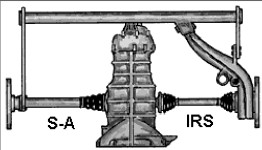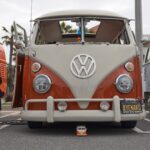The journey to building an Electric Dune Buggy begins with selecting the right donor vehicle. This crucial first step sets the foundation for the entire project, impacting performance, handling, and even legal registration. After an extensive 8-month search, comparing countless dune buggies and sand rails, the ideal candidate emerged: a vintage Tow’d with a unique set of features perfectly suited for electric conversion.
Key Criteria for an Electric Dune Buggy Donor
Finding a donor vehicle with the right combination of features can significantly simplify the conversion process and enhance the final product. Here’s a breakdown of the critical factors that influenced the selection of this particular Tow’d:
California Special Construction Title: Navigating Legal Hurdles
Registering a custom-built vehicle can be a complex process. Older practices of transferring VIN tags from existing vehicles to dune buggies are now heavily scrutinized. A “Special Construction” title designates the vehicle as uniquely built, simplifying registration. This Tow’d already possessed a California SPCNS title, eliminating a significant administrative hurdle. This pre-existing title proved invaluable, especially for electric vehicle conversions, which often have streamlined registration processes due to exemption from smog requirements. For more information on SPCNS registration for EVs in California, refer to this helpful resource: SPCNS Electric Vehicle Registration in California
IRS Rear End: Balancing Performance and Handling
The choice between a swing axle and Independent Rear Suspension (IRS) significantly impacts an electric dune buggy’s handling characteristics. While swing axles are lighter and easier to modify for high horsepower, their tendency for camber changes during cornering can lead to instability. The IRS, although heavier by approximately 40lbs, offers superior traction and predictable handling, making it the preferred choice for this lightweight electric dune buggy build.
Front End Features: Prioritizing Modern Handling
This Tow’d boasts a ball joint front end, known for providing better road feel compared to the more durable link-pin system often favored for off-road vehicles. While a link-pin might be more rugged, the ball joint setup offers a more responsive driving experience, aligning with the desired on-road performance of this electric dune buggy. Furthermore, the inclusion of front disc brakes, sourced from a Kharman-Ghia front end, provides superior stopping power and fade resistance compared to traditional drum brakes.
Aesthetic Considerations: Blending Form and Function
Beyond mechanical components, the Tow’d’s aesthetic appeal played a role in its selection. Custom-fitted front fenders, a sleek bimini top, and a vibrant sky-blue paint job contribute to its unique visual identity. While seemingly superficial, these elements add to the overall enjoyment and pride of ownership. Future modifications might include swapping the existing rims and tires for lighter alternatives to further reduce weight and enhance performance.
Conclusion: The Ideal Foundation for an Electric Adventure
The chosen Tow’d, with its unique combination of features, presents an ideal platform for an electric dune buggy conversion. The pre-existing SPCNS title, IRS rear end, ball joint front suspension, and disc brakes significantly reduce the complexity and cost of the project. While some modifications and upgrades are inevitable, this donor vehicle provides a solid foundation for building a high-performing and legally compliant electric dune buggy.


